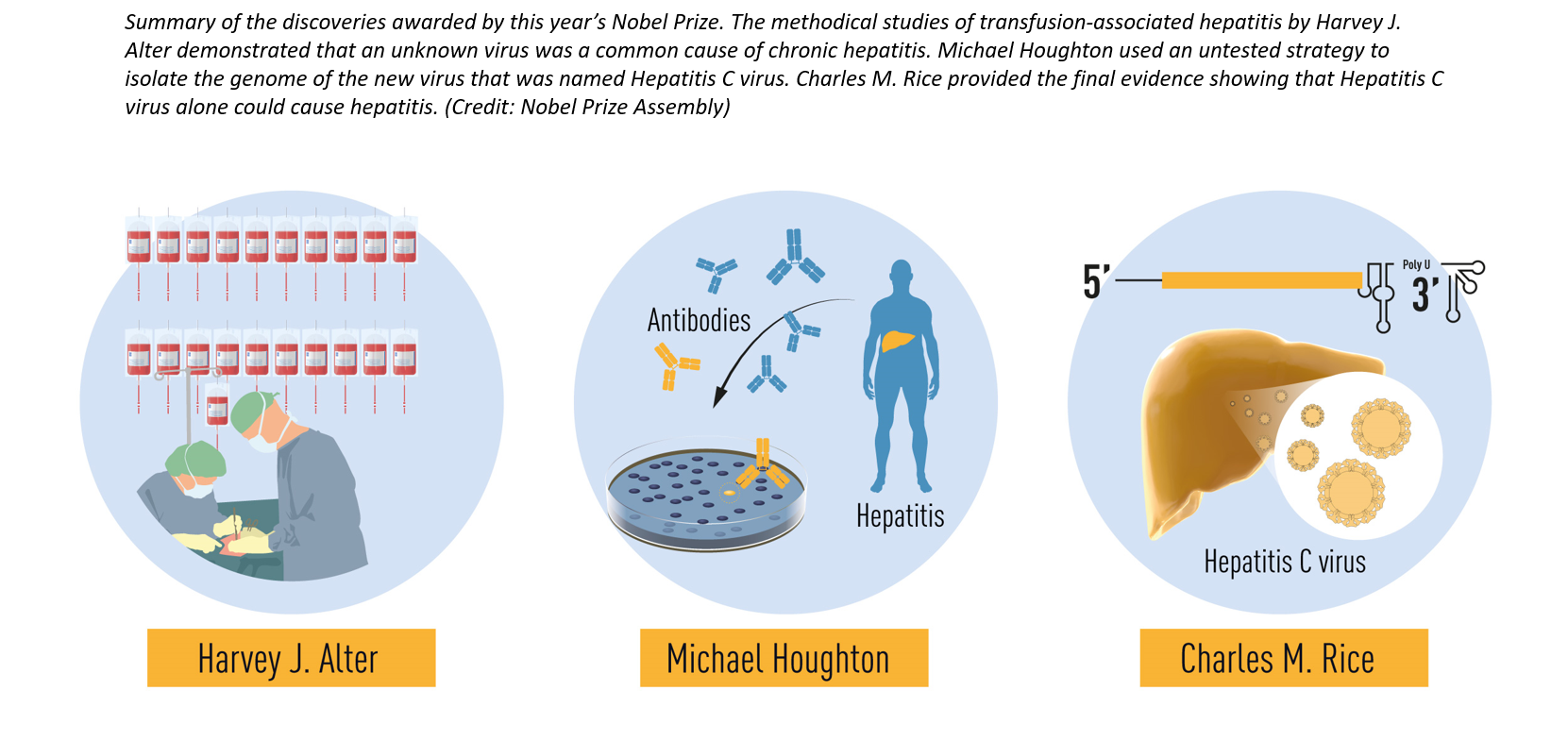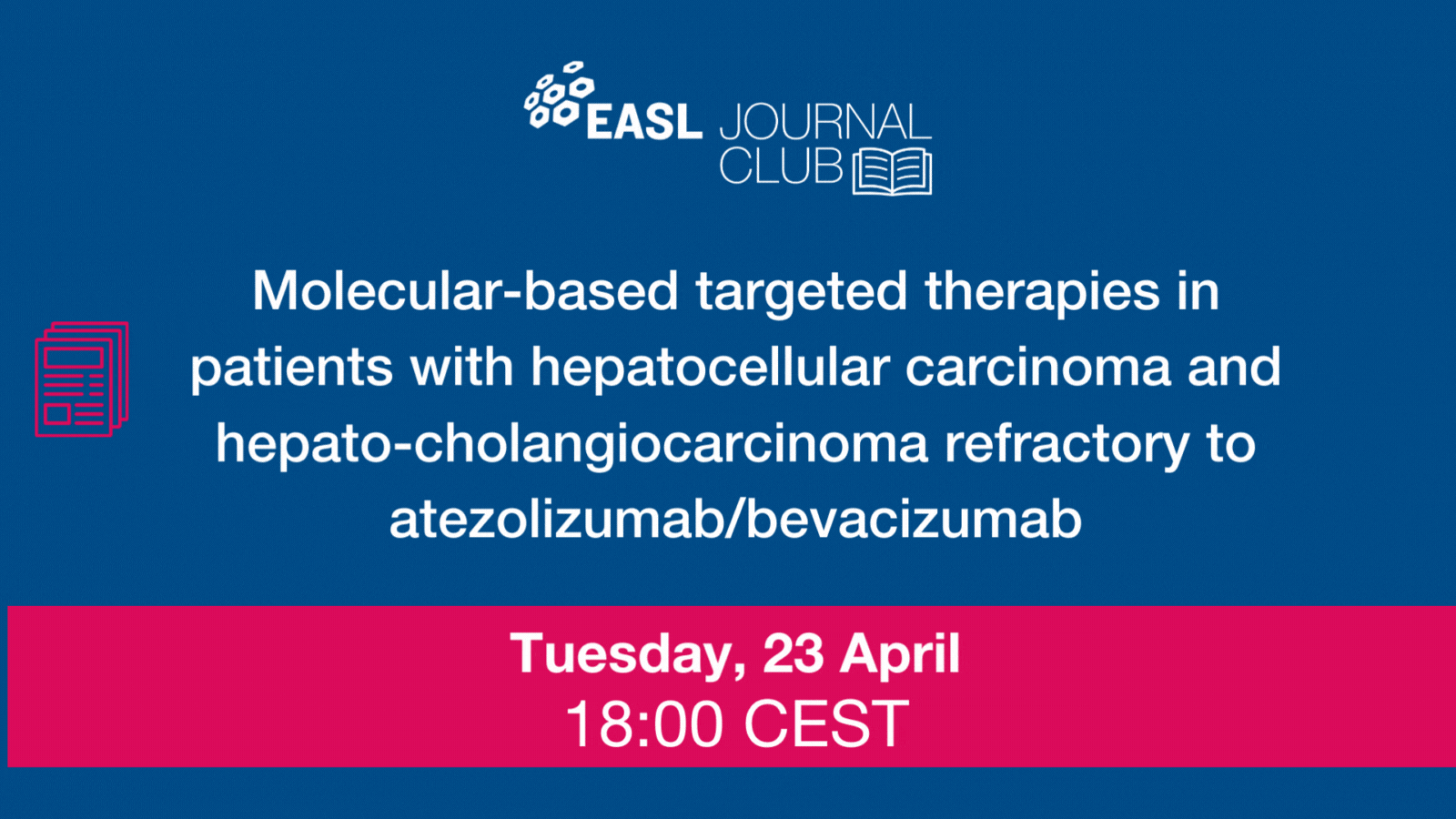Hepatitis C scientists in the limelight: Nobel Prize 2020


5 October 2020
The Nobel Prize in Physiology or Medicine 2020 has been awarded jointly to Harvey J. Alter, Michael Houghton, and Charles M. Rice for the discovery of hepatitis C virus
The 2020 Nobel Prize for Physiology and Medicine was awarded to Harvey Alter, Michael Houghton, and Charles Rice for the discovery of the hepatitis C virus (HCV). This announcement is the first of six categories of Nobel Prizes being awarded between 5 and 12 October.
The discovery of HCV
HCV, which is currently infecting 71 million people around the world, leading to 400,000 deaths annually due to cirrhosis complications and liver cancer (hepatocellular carcinoma), was initially identified by Michael Houghton and his team at Chiron Corporation in 1989.
This discovery was a première for many reasons: it was carried out by the industry, rather than by the academy, and using a sophisticated and fastidious molecular biology approach based on a phage expression library, i.e. even before the virus could be visually identified. He devoted much of his later research to searching for a successful HCV vaccine, which to date still does not exist, unfortunately.
Subsequent work formally associated the infection of this virus with the causative agent of the formerly known non-A, non-B (NANB) hepatitis, newly dubbed hepatitis C. In the early days NANB was particularly affecting transfusion recipients, and Harvey Alter, from the Transfusion Medicine Department of the US NIH Clinical Center, provided the convincing evidence that HCV was associated with 100% of well-pedigreed NANB post-transfusion hepatitis. In particular, he established the meticulously characterised panel of patient sera, which was a cornerstone to proving that a test based on the newly cloned virus by the Chiron team could reliably identify patients with hepatitis non-A, non-B.
Finally, Charles Rice, after several unsuccessful attempts to cultivate HCV in vitro, managed to assemble a consensus sequence and established a cDNA clone, which caused hepatitis after its corresponding RNA template had been injected into the liver of susceptible animals. This finding providing the final, formal evidence of the association of HCV and hepatitis. The complete replication cycle of HCV was only achieved a few years later and simultaneously by three labs, including the team of Charles Rice.
Global consequences of this discovery
The availability of in vitro replication models has allowed high-throughput testing of antivirals with increasing potency, leading to the development of the current highly effective regimens. The therapeutic breakthroughs of the last decade have led the global medical community to reasonably expect the elimination of hepatitis C as a world health threat by the next ten years.
Although this riveting progress occurred in just a few decades, from the first identification of NANB hepatitis in 1975 to the approval of the first interferon-free therapy in 2014, one should not be oblivious to the numerous barriers hampering the access to care that still affect many areas of the globe where HCV is highly prevalent.
EASL’s engagement with HCV
EASL, in collaboration with other scientific societies, government and non-governmental organisations, patients’ association, and the civil society at large, is firmly committed to make sure that no patient in the world is left out of the benefits of this unprecedented scientific success.
Credit is due to all three scientists for raising the importance of screening and diagnosis for people with hepatitis C. From a public health perspective, having tests and treatments for hepatitis C patients available supports, in practical and achievable ways, the World Health Organization’s goal of eliminating hepatitis C. This Nobel Prize is also a tribute to the many efforts and actions underway to eliminate this virus,
said Prof. Maria Buti, Professor of Medicine at the Internal Medicine and Hepatology Department, Hospital General Universitari Valle Hebron, Barcelona, and EASL EU Policy Councillor.
This triumvirate award is a perfect reflection of the potential of collaboration: dedicated clinicians pinpointing and characterising this medical challenge, and basic scientists and industry working closely together to create a roadmap to eliminate HCV infection. We also owe thanks to the countless clinicians and scientists, in academia and industry, who devoted their work – sometimes their lives – to this aim. Yet ultimately, without the patients’ trust and willingness to participate in clinical trials, we could never have found a cure for hepatitis C,
commented Prof. Thomas Berg, EASL Vice-Secretary General.
EASL resources related to hepatitis C
- EASL Recommendations: Treatment of Hepatitis C, updated September 2020
- EASL Policy Statement on Drug Use and the Global Hepatitis C Elimination Goal, August 2020
- together with its accessible, lay summary version, Drug Use and the Global Hepatitis C Elimination Goal
- Read about EASL’s commitment to fighting hepatitis
- EASL and three other health associations joined forces in a call-to-action initiative, December 2019
- EASL Policy Statement on Hepatitis Elimination, June 2019
- together with an accessible, summary version, Eliminating Hepatitis C – an Action Plan
- Numerous other EASL guidelines on the management of hepatitis
EASL Campus resources related to hepatitis C
With a one-time, free login:
- Watch the open-access Viral Hepatitis Monoconference 2020
- Browse the Viral hepatitis overview, including CPG and recommendations slide decks, and Best of ILC slide decks (2018, 2019)
- View the animated infographic on the elimination of HCV
- Browse related Patient resources and policy papers
Related documents
- Download the full press release issued by the Nobel Assembly at Karolinska Institutet


